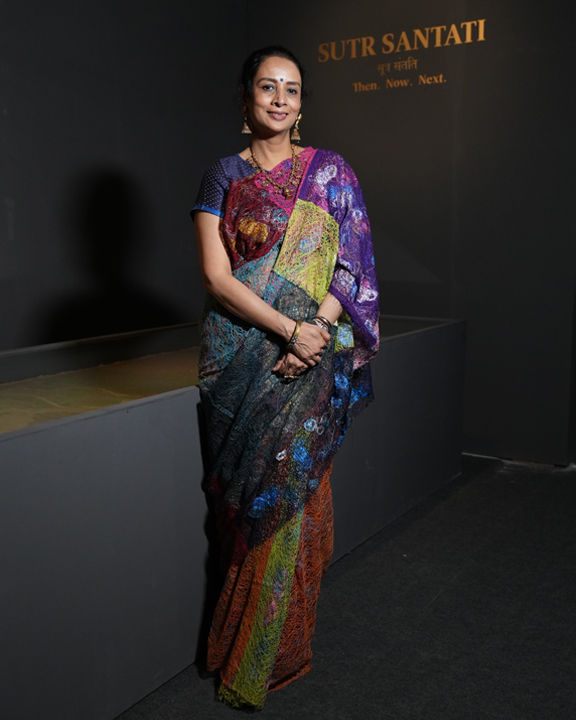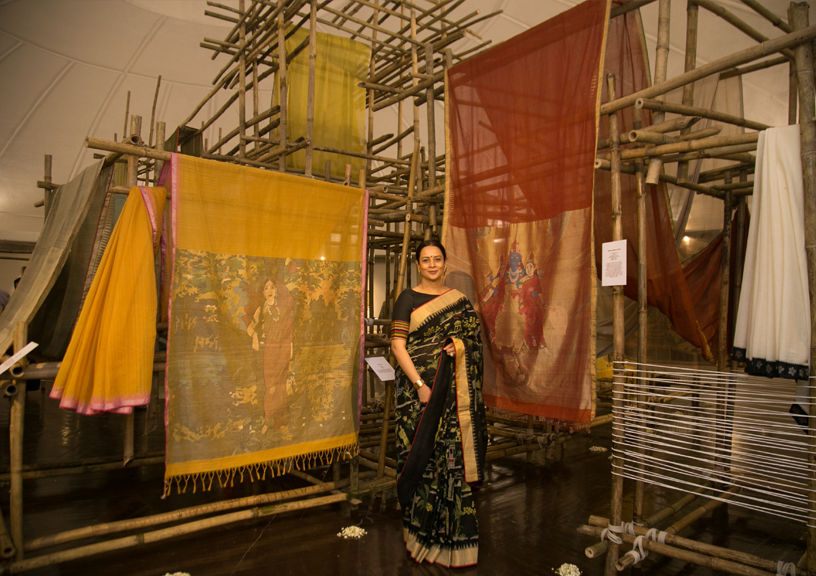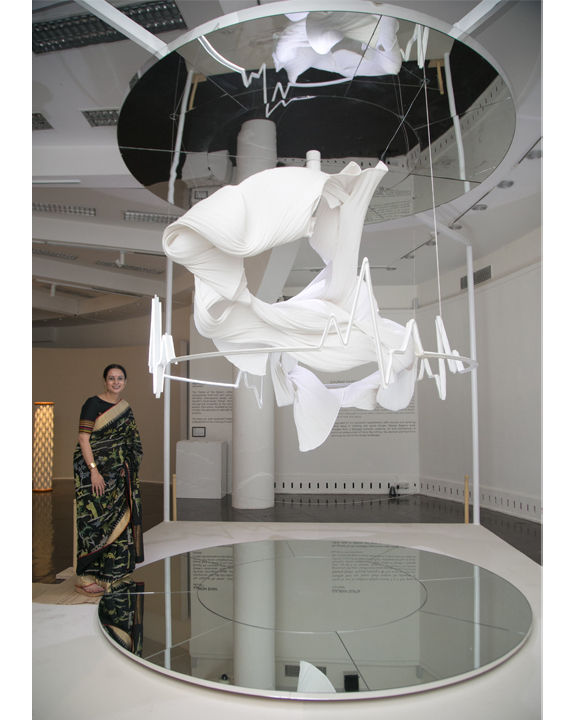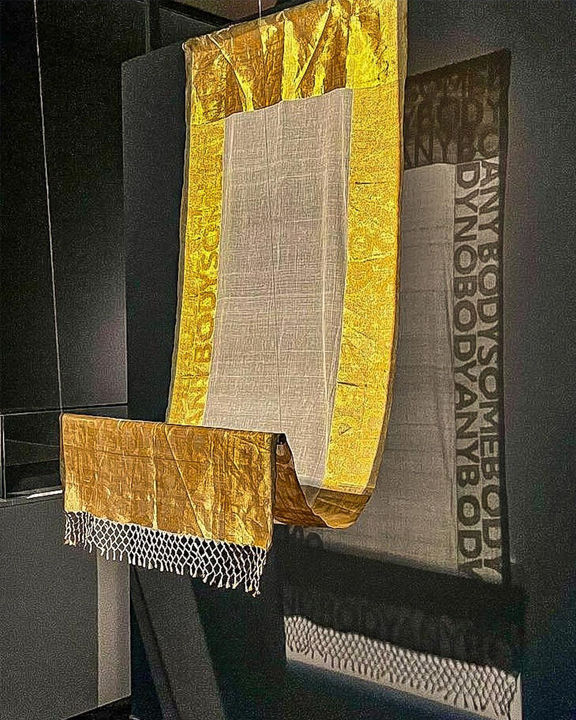Art, in its own subtle ways, brings people together even when there is a difference of opinions. The people, the environment and everything else, influence each other and nothing exists in isolation. Whether or not art exists for all, one thing is certain—the objective is not to make art, it is to be in that wonderful state which makes art inevitable!

We caught up with a few torchbearers of the art and design world and asked a few questions that would establish their stance on how art is perceived. In our conversation with Curator, Textiles Revivalist, Crafts Crusader, Educationist, Conservationist Lavina Baldota tells us about Sutr Santati and the Baldota Foundation and her insights on how people perceive art and its democratisation:
Kashish Kaushal (KK): Tell us about the idea behind Sutr Santati and the Baldota Foundation. What is the objective behind all the exhibitions you’ve curated till now?
Lavinal Baldota (LB): Santati is a curatorial platform that promotes Indian Crafts and celebrates India’s culture. Baldota foundation has its ethos anchored in Gandhian philosophy of trusteeship. Hence social impact and national pride are the cornerstone of Santati exhibitions. My curatorial journey started with the multi-disciplinary art exhibition celebrating Mahatma Gandhi’s 150th birth anniversary through Santati, Mahatma Gandhi Then Now Next which travelled to many museums. This is followed by Sutr Santati Then Now Next, which celebrates 75 years of Indian independence through the textile heritage. As these exhibitions celebrate India’s rich heritage, through the contemporary expressions, they also create opportunities and relevance for the future.

KK: How has people’s perception of textiles (and art) evolved over the years? Do you think the intermingling of art with textiles is a new concept? What has been the reaction of people when they discover indigenous textiles also make for interesting art pieces?
LB: Definitely! Through Sutr Santati we have tried to involve lot of contemporary studio artists which expand the narrative of textiles beyond attire. In India textiles have also been an important medium of art expression for eg Pichwai paintings. In the past few years, one has seen a surge in textiles used as a medium for art across the world.
KK: Art brings people together, but it also creates a divide amongst people who are its connoisseurs and those with limited resources to be a part of this niche crowd. Does art only belong to the affluent inside art galleries? Please share your thoughts about making art accessible for all.
LB: Not at all. India is a classic example of art made accessible to public, be it via Lithographs of Raja Ravi Varma or textile art like Mata ni Pachedi. Santati exhibitions are only displayed in Museums and not white cube galleries, so it becomes accessible to more and more people.

KK: What is the one thing you would like to change in the art/design industry and why?
LB: Creating a contemporary design language that has a global appeal. Also providing recognition and dignity to the crafts people.

KK: Name an artist you think the world needs to know.
LB: Since I have been working with textiles, there is Chandrashekhar of Metaphor from Bangalore who is an exceptional textile artist and pattern maker, whose design language has a timeless global appeal.
Want to read the full article? Click here and subscribe to A+D!
